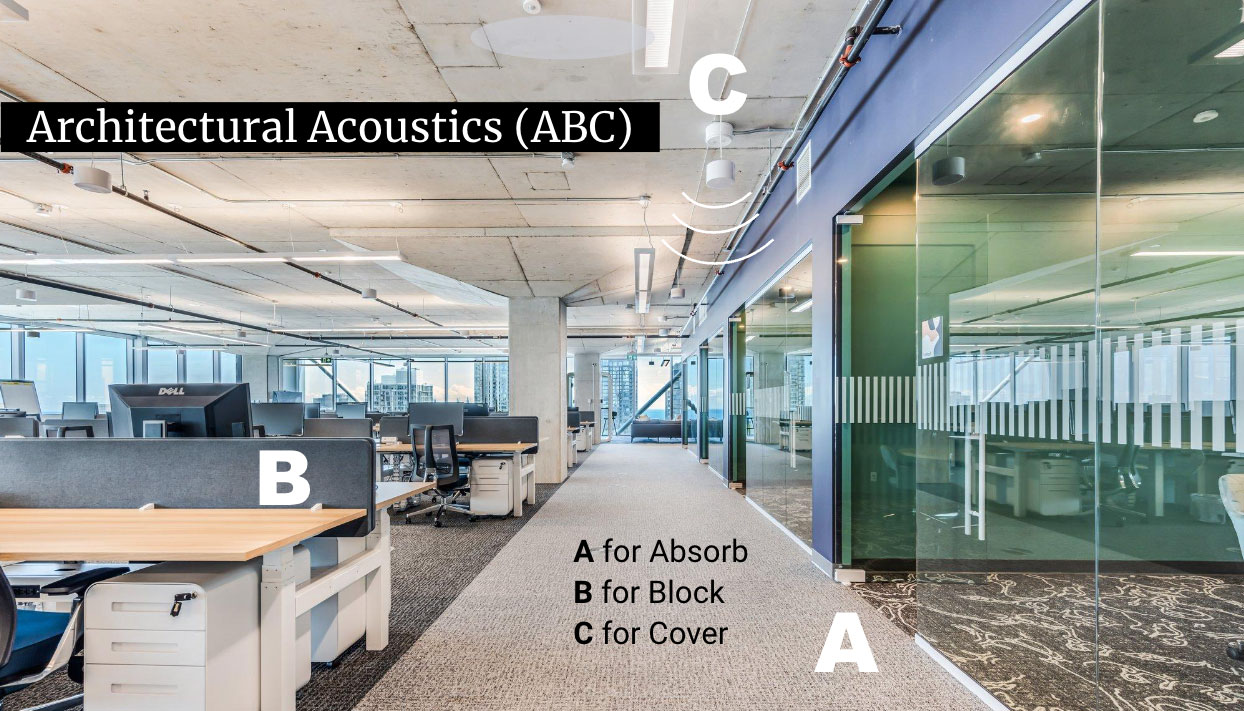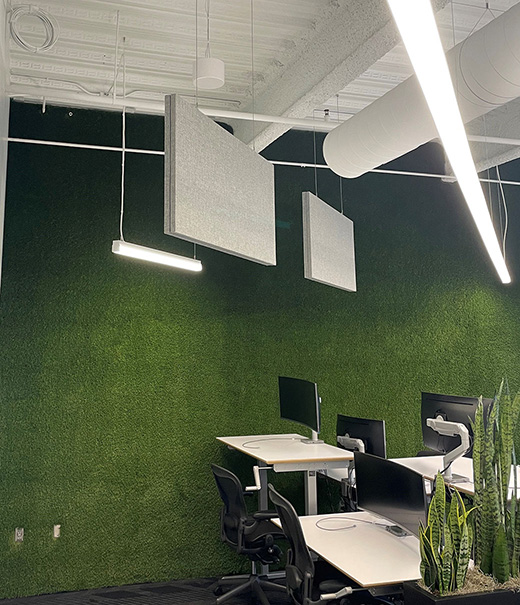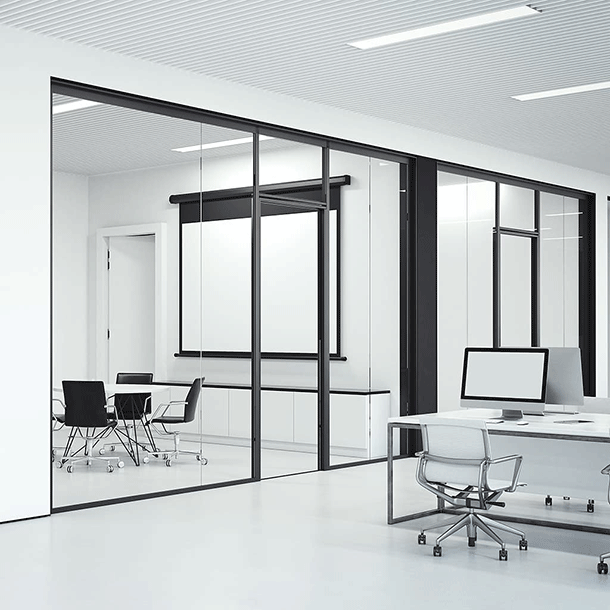Managing sound effectively becomes a key challenge as office layouts evolve with contemporary trends favoring open plans and minimalistic designs. Fortunately, there are cost-effective strategies to improve office acoustics without breaking the bank, with sound masking being one of the most efficient solutions. Here’s how you can create or update your office space to be acoustically optimized, ensuring a comfortable and productive environment.
Understand the Basics of Acoustics
Before diving into solutions, it’s essential to understand the basics of acoustics in the workspace. Sound travels and can be absorbed, blocked, or covered (masked). Managing these sound paths in an office helps reduce distractions and protect speech privacy. The goal is to achieve a balance where background noise is minimized, and conversations aren’t easily overheard.

Identify Problem Areas
Start by identifying areas where sound privacy and noise are issues. Common problems in modern offices include echo and reverberation, which occur when sound bounces off hard surfaces like glass and concrete. Pinpointing where sound issues are most pronounced helps in effectively targeting your acoustical interventions.
Opt for Acoustic Tiles and Panels
Acoustic panels and tiles are a budget-friendly way to absorb sound. These can be installed on walls and ceilings to help reduce reverberation and echo. Available in various materials and designs, they can also enhance the aesthetic appeal of your office. Choose panels that complement your office decor while providing functional sound absorption.
Rearrange Office Layout
Sometimes, the arrangement of your office furniture can impact acoustics. Position large furniture pieces like bookshelves and filing cabinets against walls where sound tends to bounce. This placement can help absorb and block sound waves. Consider creating designated quiet areas and noisier activity-based zones to manage sound more effectively.

Use Sound Masking Technology
Sound masking is a technology designed to introduce a subtle, unobtrusive background sound to an environment. The added sound, often compared to airflow, is engineered to cover up or mask human speech, making conversations less intelligible from a distance. This technology is highly effective in open office spaces where traditional soundproofing methods are impractical or too costly. The total cost of implementing our sound masking technology—including system components, installation, cabling, commissioning, and calibration—starts at $4.00 per square foot, depending on the project's complexity and the size of the floor space covered by the system. Calculating the return on investment for sound masking is straightforward.
Try our ROI Calculator
Area measurement unit
Percentage increase in employee productivity
Studies show that office worker productivity increases between 10 and 25% with sound masking. Learn more.
Increase in productivity
-
Average annual employee salary
Average monthly return
-
Average annual employee indirect expense
Typically represents 20% of annual employee salary.
Sound masking system cost
-
Number of employees
Months to pay off system
-
Surface area in need of sound masking (sq.ft.)
According to industry standards, the average office floorspace per employee is between 80 and 120 sq.ft.
Return after 1 year
-
Sound masking system cost per square foot
Return after 5 years
-
Increase in productivity
-
Average monthly return
-
Sound masking system cost
-
Months to pay off system
-
Return after 1 year
-
Return after 5 years
-
Incorporate Soft Furnishings
Soft materials absorb sound, so incorporating elements like carpets, rugs, and upholstered furniture can significantly improve office acoustics. These materials help reduce surface hardness, minimizing the sound bouncing effect typical in modern minimalist offices.
Regularly Update and Maintain Acoustic Features
Acoustic optimization is not a one-time effort. Regular updates and maintenance of acoustic features are essential to adapt to changes in office layouts and evolving needs. Periodic assessments will help you identify new problem areas and address them promptly.
Creating an acoustically optimized office space on a budget is achievable with strategic planning and smart interventions. Sound masking systems provide an efficient and cost-effective solution to manage office acoustics subtly. By combining this technology with other acoustic improvements such as strategic layout changes and the use of absorbing materials, businesses can enhance productivity and ensure privacy in the modern workspace. With these steps, you can create a more acoustically friendly office environment that supports the well-being and efficiency of all employees.


